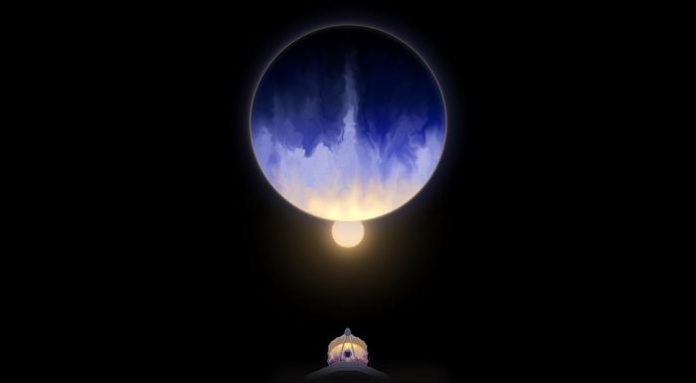
I’ve often stated that planets come in a wide range of sizes but rarely do I find myself stating they come in a wide range of shapes too!
The discovery of WASP-107b is a case in point since this planet is the size of Jupiter but only a tenth of its mass.
But there’s more… Using the James Webb Space Telescope a team of astronomers have accurately identified that the planet has an east-west asymmetry in its atmosphere, in other words, it’s lopsided.
It is tidally locked to the star and on one side, the atmosphere seems to be inflated compared to the other.
Planets orbiting other stars are known as exoplanets. WASP-107b is one such planet in orbit about a star 200 light years away in the constellation of Virgo.
The first exoplanet detection was confirmed in 1992 and since then over 5,000 alien planets have been identified.
A multitude of different techniques are used to hunt them down from searching for dips in light from distant stars to analysing the spectra of a star.
A wide variety of planet systems have been found from Earth-like possibly habitable planets to great big gas giants like Jupiter.
With the new generation of space telescopes like the JWST it is now possible to study the atmosphere of exoplanets to learn even more about them.
A team of astronomers from the University of Arizona have been using the JWST with an international group of researchers to study WASP-107b.
They discovered the east-west asymmetry of the planet as it passed in front of its host star just like the Moon does during a solar eclipse.
The shape of the planet is an atmospheric phenomenon but of course when it comes to gas giants like Jupiter that’s pretty much referring to the planet itself.
It’s not just a physical asymmetry though as there are temperature and cloud property differences between the eastern and western hemisphere.
It’s now important to explore the asymmetry observed to learn more about the dynamics of the planet and whether it’s a unique phenomenon.
One element of the planet which is cause for investigation and likely cause is that it’s tidally locked to the star. The force of gravity from the star and the force of gravity on the planet have acted upon each other to lock one face of the planet to the star.
This means one hemisphere is constantly illuminated and warmed by the star while the other hemisphere is permanently night! Tidal locking is not unique to WASP-107b though so if this is the cause then the asymmetry should be common.
To make their finding, the team used a technique known as transmission spectroscopy. In this technique, observations are made of the starlight as it passes through the atmosphere of the planet during transit events.
As the light passes through atmospheric gasses, the presence of different gasses interacts with the light in different ways that can be seen during spectral analyses.
What does make WASP-107b unique is low gravity and low density giving rise an atmosphere that is somewhat over-inflated compared to other alien worlds of this mass. This is the first time such an asymmetry has been seen so it will be interesting to see how unique this fascinating world really is.
Written by Mark Thompson/Universe Today.



